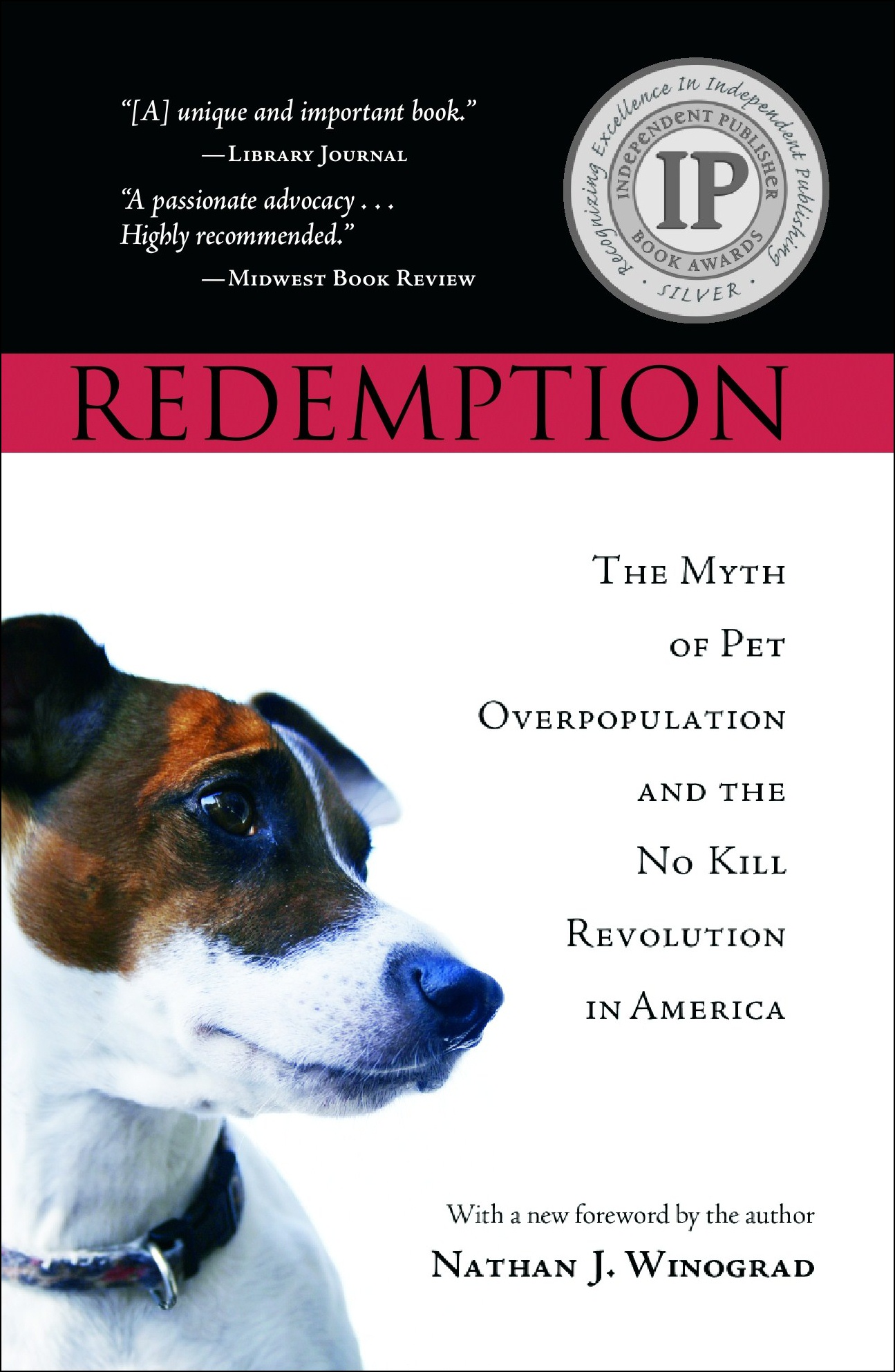Now on Twitter

Follow me @nwinograd on Twitter.
For other ways to stay connected:
- Get bi-weekly announcements of my blogs, appearances, and more, by clicking here.
- Listen to me weekly on Animal Wise Radio, by clicking here.
- Follow my work at the No Kill Advocacy Center, by clicking here.
- Subscribe to the No Kill Advocacy Center’s free e-newsletter, by clicking here.
- Join me for my public seminars and/or booksignings, by clicking here.
Austin Texas Citizens Demand No Kill Equation
A unanimous decision of a citizens’ advisory committee in Austin, TX has demanded that the shelter stop killing animals despite empty cages, model itself after successful programs in places like Reno, NV, implement the programs and services of the No Kill Equation, and even consider privatizing the shelter.
Town Lake Animal Control’s director tried to derail the vote, but was outnumbered by animal lovers on the Committee. Even the ASPCA’s Karen Medicus, the spokesperson for the ASPCA’s convoluted Mission: Orange program, could not be typically obstructionist of animal advocates and finally sided with them by voting for the measure.
Though hailed as a Mission: Orange success story by Medicus and her boss, Ed Sayres, the real success in Austin belongs to Austin Pets Alive (APA), which is saving these animals, on a threat of a death sentence by the pound. While Sayres told the local newspaper, the Austin Statesman, that Mission: Orange has led to the save rate increase, this—like much of Ed’s rhetoric—is nothing more than bluster. Mission: Orange did nothing of the kind. Outside inspections found hundreds of empty cages, even while the killing continues. There would not have been any increase of significance but for APA taking animals on the pound’s kill list. Take away transfers to APA, and Year two of Mission: Orange, like Year One, would have been a failure. The pound’s regressive director, Dorinda Pulliam, knows this. Medicus knows this. And, of course, Ed Sayres knows this. But what do you expect from a guy who says that killing is the moral equivalent of not killing? Or, in his own twisted words: “There is no room for No Kill as morally superior.”
Despite an envious and generous (by comparative standards) per capita budget of $7.16, and hundreds of thousands of additional dollars being thrown at it by the ASPCA, the Austin pound continues to lag behind more progressive communities in terms of lifesaving. As a recent study and successful communities have shown, all the money in the world can’t save an animal unfortunate enough to find himself at a shelter with a director obstinate in her refusal to implement lifesaving alternatives to killing. The study concluded that communities which invest in progressive leadership—which Austin does not have—save the vast majority of lives on budgets a fraction of the one in Austin, TX.
According to the Advisory Committee report,
The City Manager should ensure that the Animal Services Department is fully onboard with the Council’s new directive to make Austin a No Kill City by saving 90% of impounded animals:. Any employee of the shelter who rejects the Council’s directive either through disagreement or lack of effort should be removed or reassigned.
I’m with Donald Trump on this one. They deserve two words: “You’re fired!” Remember, it is better to fire a bad staff member, than to kill a good animal.
Hey Austin politicians, you want to save money and save lives? Invest in progressive leadership!
To read the Austin report, click here.
To read the No Kill Advocacy Center’s leadership study, click here.
Your American Animal Shelter
While the Humane Society of the United States assures us that everyone in animal sheltering has “a passion for and are dedicated to the mutual goal of saving animals’ lives” and PETA says blaming shelters for killing is like blaming hospitals for sickness, animal advocates in Tulare County, CA know better. The shelter manager was recently indicted for needlessly killing animals in order to sell their bodies for dissection. He has not been fired, but has been put on paid administrative leave.
The Tulare County shelter has long lobbied against increased protections for sheltered animals in California, was one of the most vocal opponents of the 1998 Animal Shelter Law which gave rescue groups rights to save sheltered animals, and continues to blame the irresponsible public for its own failings and criminal activity.
This is YOUR American animal shelter. The one that blames YOU for the killing.
(Thanks to YesBiscuit! for breaking this story.)
Your American Animal Shelter, Part II
Cats lie dead at Collier County Animal Services following a mass killing ordered by the shelter’s then-uncaring and incompetent director, despite a per capita budget that is the envy of shelters nationwide.
In order to save money, Collier County FL Commissioners are considering doing away with most adoptions at the local shelter, turning its shelter, Collier County Animal Services (CCAS) into a slaughterhouse, with no pretensions to being anything different. Collier County is one of the wealthiest communities in Florida, but its animal shelter has long been run by incompetent, uncaring and cruel managers, while Commissioners have turned a blind eye.
I did an assessment of the shelter in 2007. This is a sample of what I found:
- Of 3,445 cats taken in during the previous twelve month period (October 1, 2006 to September 30, 2007), 2,727 lost their lives, the vast majority at the hands of CCAS staff.
- Animals are dying in their cages, because there is no one to care for them.
- Four staff members (three “customer service representatives” and one individual in uniform) were sitting behind the front desk socializing about their personal lives. I overheard one of them telling the other about the number of “margaritas” she had to drink the night before. Meanwhile, animals were standing in their own filth in their cages and kennels, none were asked to go into the kennels to provide care, and they were certainly not doing it on their own volition.
At the same time, shelter leadership took the position that it was doing a good job with what it has. For example, the director “excused” rates of shelter killing by relying on outdated and factually inaccurate clichés: “A good death is better than a bad life,” she told me in defense of their practices. At another time, she stated that “I’d rather kill cats with a full belly than have them die hungry under the wheels of a car.” This is rhetorical nonsense.
First, those are not the choices. A cat does not face either shelter killing on the one hand, and on the other, a life of deprivation and ultimately being run over with a car. In fact, a comprehensive eleven-year study of outdoor cats found that they had similar baselines for health to indoor cats and similar rates of disease in comparison. Furthermore, the study found that the vast majority of the cats were in good physical condition, with only four percent killed for health reasons. The director’s contention that we stop the cat from possibly suffering or possibly dying by killing the cat ourselves is an irreconcilable contradiction and a patently unethical one.
Second, there are many programs which CCAS could implement, which would obviate the perceived “need” to kill. For example, the agency could have a non-lethal feral cat TNR program, which the director opposed. The agency could adopt more animals based on a more systematic and comprehensive media presence, but the director chose to intentionally operate under the radar to avoid public scrutiny. The agency could do daily offsite adoption programs, but chose not to. It can have more public friendly hours, it can hold staff accountable to results, it can start a foster care program, it can improve relations with the local humane society, and more—none of which it currently does or does well, despite a per capita budget of $8.46, almost three times the rate of Tompkins County which has saved at least 92% of the animals every year for the last seven years, and over four times the rate of Charlottesville’s animal control shelter, which is also saving 90%.
My recommendations were ignored, and now the Commissioners seem intent on actually killing even more animals. Once again, all the money in the world can’t save an animal unfortunate enough to find himself at a shelter with a director obstinate in her refusal to implement lifesaving alternatives to killing. Add a bunch of derelict Commissioners to the mix, and the end result is even worse.
Once again, this is YOUR American animal shelter. The one that blames YOU for the killing.
More from the Redemption Archives

In a prior post, I wrote that I began packing away the material used to write my book, Redemption: The Myth of Pet Overpopulation & The No Kill Revolution in America. But as so often happens when you go through old items, you begin re-reading them. I came across a couple of items of note. I also wrote that periodically, I’d release some of the material for posterity. Earlier, I released some letters from HSUS telling a prosecutor that feral cat caretakers should essentially be arrested for animal abandonment, and calling TNR inhumane and abhorrent. I also released a postcard written by PETA that they didn’t believe in right to life for animals.
Here’s more:
Over the objections of feral cat advocates pushing for a TNR program, the Mayor of Miami Beach pushed a plan to trap and kill feral cats. PETA sent a letter to the Mayor applauding his decision. The Mayor, however, had also decided that kittens would be turned over to a rescue group for socialization and adoption. But PETA took issue with this part of the plan, arguing that all the cats, including the kittens, should be taken to animal control and, if necessary, “euthanized by sodium pentobarbital injection.” In Miami, animal control has long deemed it necessary to kill these little gems.
Read the letter by clicking here.
The American Kennel Club’s Vice-President says “it should probably be a crime to feed feral colonies.” They can’t seem to get it right about dogs, why are they offering wrong opinions about cats? Click here for the letter.
The year is 1988 and financial scandals rock HSUS. So what else is new? Read the Washington Post article here.
And, last but certainly not least, the ASPCA says the only reason No Kill was successful in San Francisco was because of a large gay community. (The ASPCA also underplays the population of the city eleven-fold). You can’t make this stuff up. The late-Roger Caras writes, “Running on about no-kill as the answer is maybe okay in San Francisco, with a population of 70,000, one third who are gay (the gay community is traditionally the most animal friendly).”
This is from same man who once likened dogs and cats to “inhabitants of an interstellar craft: brought here with the purpose of disrupting our ecosystem.” He described them as a threat of the highest magnitude, damaging property and decimating wildlife, and the notion of creating successful programs to save them as so impossible that it was “not worthy of a passing daydream.”
Read the letter by clicking here.
Redemption for Smiley

Someone said Smiley looked like a Pit Bull-mix. Talk about getting it wrong! Because of that, however, Smiley was imprisoned for two years in a Washington shelter and scheduled to be killed, caught in a game of politics and power and litigation between the shelter and animal lovers. According to rescue advocates, many people tried to adopt Smiley but were rebuffed. Smiley was finally saved.
Read Smiley’s story by clicking here.
It’s time to take away the discretion and power of shelter managers to ignore what is in the best interests of the animals and kill or, in this case, confine them needlessly.
Find out how to mandate lifesaving by limiting shelter discretion by legislating the programs and services of the No Kill Equation. Learn about the Companion Animal Protection Act by clicking here.
It’s Here!

The most acclaimed book on animal shelters just got better. Redemption has been updated and expanded for 2009, including:
- HSUS has been forced to modify its language and admit that pet overpopulation is a myth. But is it changing in deed as well as word?
- In spite of overwhelming evidence to the contrary, what if pet overpopulation is real? Does that change the calculus of killing?
- Do shelter animals have a right to live?
- How can we dismantle the killing paradigm?
- Should we regulate shelters the way we regulate other institutions that have the power of life and death? And how?
Available wherever books are sold.
For more information, click here.
To purchase the new edition from Amazon, click here.
No Kill Documentary Wins Award

Fifteen Legs, the documentary about animal lovers rescuing dogs and cats from death row in shelters and driving them across country to loving new homes just won the prestigious CINE Golden Eagle Award.
The documentary includes extended commentary by me, and will begin airing on PBS stations in July.
For more information, click here.
A No Kill Houston?
Join me this Monday, June 29, at 10:05 am PST as I talk for 30 minutes on the No Kill movement and what it means for the animals of Houston with KPFT FM 90.1 radio hosts. You can also listen live at kpft.org.
Thank you
I really want to thank all the well wishers and kind comments I received following my blog about the death of my kitty, Gina, and the death of Uncle Steve. I can’t tell you all how much it meant.
The blog is here.